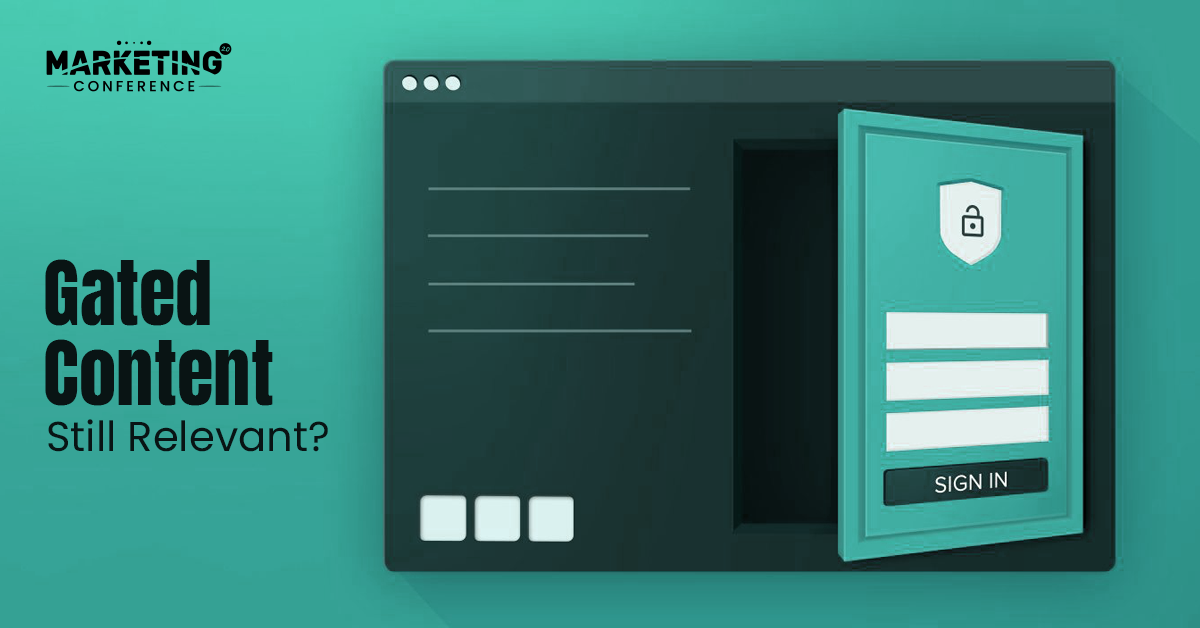
"The question is whether to gate or not to gate." - This has been an ongoing debate for quite a long time. Whether you like it or not, gating content is at the heart of most B2B marketing strategies. However, numerous articles are circulating now urging B2B marketers to un-gate all of their content.
The ability of gated content to generate high-quality leads is difficult to argue against - but we're not afraid of a challenge. Many experts at global marketing summits have questioned if it is the best strategy to force someone into a conversion funnel they aren't ready for. Let's find out -
What Constitutes Of Gated Content?
First and foremost, let's ensure we're all on the same page. Any content kept behind a lead capture form is considered gated content. In other words, if you have to provide personal information, such as an email address, to access the content, it is gated. Gated content is typically marketed as a 'premium' offering, with common examples including eBooks, white papers, videos, and comprehensive reports.
The Pros & Cons Of Content Gating
Let's start with the good news: there's a reason why gating content is so prevalent in the industry: it works if you want to prioritize high-quality lead generation over page views. People willing to bear their souls - or in this case, their email addresses - are often most interested in your company. So, if you want to separate the wheat from the chaff, it can be beneficial to gate the content because it helps to weed out the weaker leads. Post-COVID marketing events shed light on the brighter side of gating content that provides valuable information about potential clients. The information they provide to access content can be nurtured much more personally, which can help you and them form stronger relationships.
Sure, having access to higher quality leads is fantastic - no one can deny that. But is it worth losing tens of thousands of other potential leaders who are put off by having to provide personal information? This is precisely the problem you face when gating content.
Even though we spend so much of our time online, more people than ever are guarding their personal information. Giving up personal information - even for something they are genuinely interested in - can be a huge issue.
Gated content, by definition, creates a barrier to increasing brand awareness and reach. You are not only limiting the number of people who can access your offering, but you are also missing out on the potential impact of likes and shares. Consider this: if your audience isn't sure about giving you their information in exchange for your content, why should they expect their audience to?
Consider that the crucial hook converts a prospective lead into a sale. You've turned down business because of an email address. But which would you prefer?
Hybrid Approach
Many marketing events, such as the Marketing 2.0 Conference, focus on the effectiveness as well as the lack of it of gating content. However, rather than taking sides, the best course of action is to sit on the fence - or, in this case, the gate! The trick is to ensure you gate the appropriate content at the right point in your customer's journey. Fortunately, we've compiled a few pointers to get you started.
* Examine all of your currently gated assets:
Take some time to review your gated assets, noting the number of views and downloads you received for each of them over the last two years.
* Select the best of the bunch:
Take note of the top content assets that generate steady leads. You could also update it to keep them current.
* Spoke and hub:
Consider how to create new, ungated content linked to your gated content to increase your lead generation.
* Librate:
"They may take their email addresses, but they'll never take your content's freedom," says Mel 'Braveheart' Gibson. Create a strategy for all that juicy content that no one is reading, then open the gate and let the people in.
Choosing this hybrid approach will make you feel less risky and help you better understand the variety of content your target audience engages with. Don't throw out the baby with the bathwater by ungating all your content at once; this will also allow you to appreciate whether you even need it fully.

